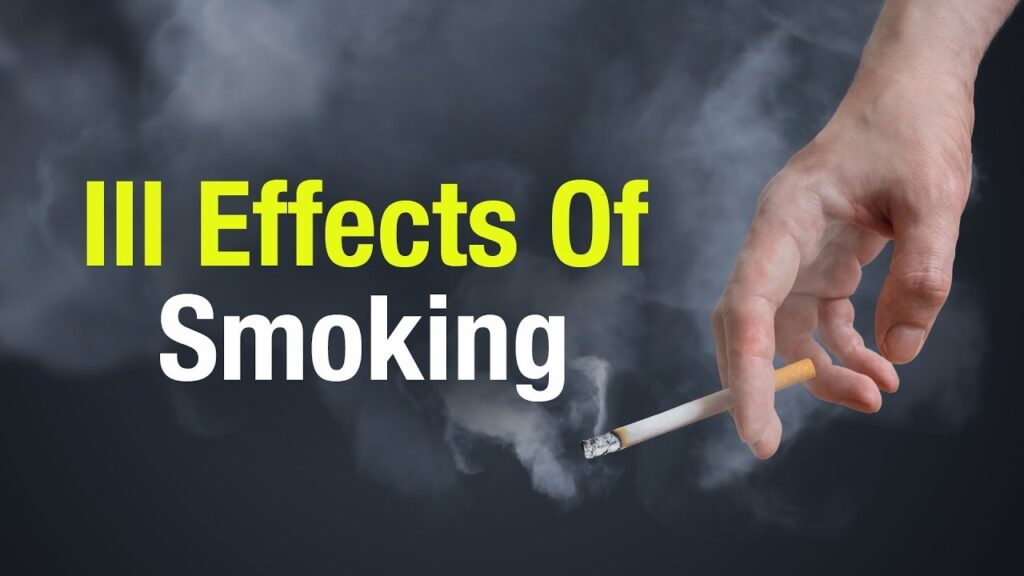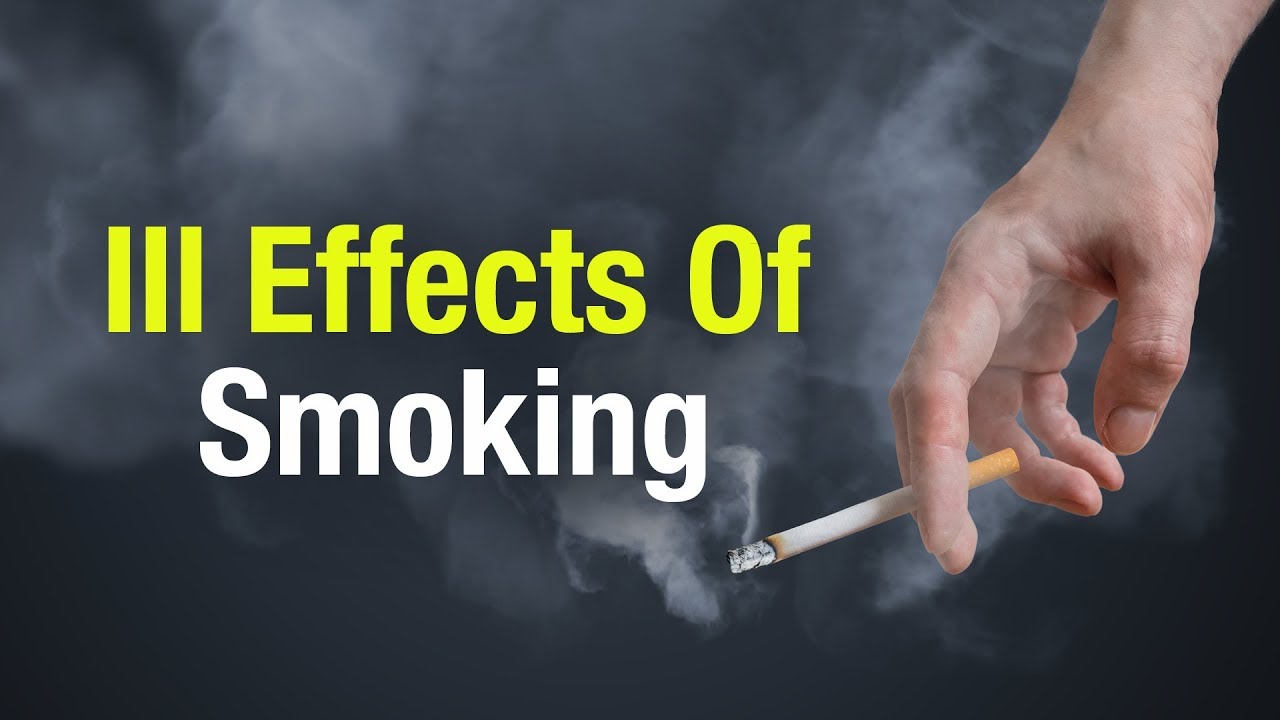Understanding the Detrimental Effects of Cigarette Smoking on Your Health
Smoking has long been recognized as a significant health risk, with a multitude of harmful effects that can impact various aspects of your well-being.
From its association with cancer to its influence on heart health, it’s crucial to grasp the gravity of these consequences.
In this comprehensive post, I’ll delve into ten harmful effects of cigarette smoking, discussing the potential repercussions on your body and overall quality of life.
See Effects of Pregnancy on Boyfriends

1. Increased Risk of Cancer
Smoking stands as the primary cause of cancer-related deaths in the United States.
It’s responsible for initiating cancer development in numerous body parts, including the lungs, throat, mouth, larynx, esophagus, stomach, pancreas, liver, colon, rectum, bladder, kidney, and cervix.
The toxic substances in cigarette smoke can trigger genetic mutations and cell damage, paving the way for malignancy.
2. Heart Disease and Stroke
The adverse impact of smoking on cardiovascular health cannot be overstated. Smoking contributes to an elevated risk of heart disease and stroke by damaging the arterial lining.
This damage promotes the accumulation of plaque, resulting in artery blockages that can trigger heart attacks and strokes.
3. Lung Diseases
Chronic obstructive pulmonary disease (COPD), which encompasses conditions like emphysema and chronic bronchitis, is predominantly caused by smoking.
COPD leads to breathing difficulties and, in severe cases, can even prove fatal.
The harmful particles in cigarette smoke inflame and scar the airways, impairing lung function and normal breathing.
4. Type 2 Diabetes
Smoking isn’t just detrimental to the lungs; it also poses risks to systemic health.
Individuals who smoke are more susceptible to developing type 2 diabetes.
Moreover, smokers who already have diabetes find it challenging to manage their blood sugar levels effectively due to the adverse impact of smoking on insulin sensitivity.
5. Premature Death
Smoking is the foremost contributor to preventable deaths in the United States.
The habit shaves an average of ten years off life expectancy.
The combination of various health risks associated with smoking significantly decreases overall well-being, increasing the likelihood of premature death.
6. Fetal Development Problems
Pregnant individuals who smoke expose their unborn children to a range of health hazards.
Smoking during pregnancy is linked to low birth weight, premature birth, and an increased risk of sudden infant death syndrome (SIDS).
The toxic chemicals in cigarette smoke can hinder proper fetal development and lead to lifelong health challenges for the child.
7. Infertility
Both male and female fertility can be compromised by smoking.
Women who smoke may experience difficulties getting pregnant, while men may encounter challenges maintaining a healthy sperm count.
The toxins in cigarette smoke disrupt reproductive hormones and damage reproductive organs, making conception more challenging.
8. Skin Problems
The detrimental effects of smoking extend even to your skin’s appearance. Smoking accelerates the ageing process, leading to premature wrinkles, fine lines, and age spots.
The harmful substances in cigarette smoke impair blood circulation, deplete the skin’s oxygen supply, and reduce collagen production, all contributing to premature ageing.
9. Gum Disease
Smoking has a pronounced impact on oral health, elevating the risk of gum disease and tooth loss.
The toxins in cigarette smoke impede blood flow to the gums, making it harder for them to heal and fight infections.
This makes smokers more susceptible to gum inflammation, infection, and ultimately, tooth decay and loss.
10. Hearing Loss
Surprisingly, smoking increases the risk of hearing loss, particularly in men.
The toxic chemicals in cigarette smoke can damage the delicate structures of the inner ear, disrupting hearing function over time.
What are the evil effects of cigarettes?
Cigarette smoking is a deeply harmful habit with far-reaching consequences for both physical and mental well-being.
The detrimental effects of smoking encompass a range of health issues, from life-threatening diseases to compromised quality of life.
In this section of this post, I’ll explore the numerous harmful impacts of cigarette smoking, shedding light on the importance of quitting for a healthier, more vibrant life.
The Deadly Toll: A Closer Look at the Effects
Cancer: Smoking is the primary contributor to cancer-related deaths, causing malignancies in various parts of the body such as the lungs, throat, mouth, esophagus, and more. The risk extends to organs like the liver, pancreas, bladder, and cervix.
Cardiovascular Health: The heart and arteries suffer significantly due to smoking. It elevates the risk of heart disease and stroke by damaging artery linings, leading to plaque buildup and potentially fatal blockages.
Respiratory Diseases: Cigarette smoking is the leading cause of chronic obstructive pulmonary disease (COPD), encompassing conditions like emphysema and chronic bronchitis. These ailments hinder breathing and can result in fatal outcomes.
Type 2 Diabetes: Smoking amplifies the risk of developing type 2 diabetes, making blood sugar control more challenging for individuals with diabetes.
Premature Death: Smoking substantially reduces life expectancy, cutting short an average of 10 years of life due to preventable diseases.
Adverse Pregnancy Outcomes: Pregnant individuals who smoke put their fetuses at risk for complications including low birth weight, premature birth, and sudden infant death syndrome (SIDS).
Infertility: Smoking impedes reproductive health, making conception challenging for women and affecting sperm count in men.
Skin and Dental Health: Skin aging, wrinkles, age spots, and dental issues like gum disease and tooth loss are common consequences of smoking.
Sensory Health: Smoking heightens the risk of hearing loss and vision problems, including cataracts and macular degeneration.
Bone Health: Osteoporosis, characterized by brittle and weak bones, is a possible outcome of smoking.
Rheumatoid Arthritis: Smoking raises the risk of rheumatoid arthritis, an autoimmune disease causing joint inflammation.
Neurological and Mental Health: Smoking impacts cognitive function, increases the risk of anxiety, depression, and sleep disturbances.
Weight and Athletic Performance: Quitting smoking can lead to weight gain but is far outweighed by health benefits. Smoking also hampers athletic performance.
Social and Emotional Well-being: Smoking affects relationships, increases the risk of depression, and hinders emotional well-being.
The Path to Wellness: Quitting Smoking
Comprehensive Approach: Quitting smoking is a crucial step toward improving health. Resources like counseling, medication, and support groups offer assistance on this challenging journey.
Health Benefits: Although quitting may lead to weight gain, the health advantages far surpass the potential drawbacks.
Cognitive and Physical Improvement: Quitting smoking results in improved cognitive function, better sleep, and enhanced athletic performance.
Positive Mental Impact: Quitting can alleviate anxiety and depression symptoms, contributing to improved overall well-being.
Reclaiming Control: By quitting smoking, you regain control over your health and quality of life.
See Strategies for Young Females Dealing with Teen Pregnancy at School
What is the most harmful effect of smoking?
Smoking, an insidious habit, inflicts a multitude of devastating effects on health.
Among these, the most dire consequence is its role as the leading cause of cancer, responsible for approximately 20% of all cancer-related deaths in the United States.
This section of this post delves into the intricate connection between smoking and cancer, as well as the broader spectrum of harmful health outcomes associated with smoking.
Unmasking the Link Between Smoking and Cancer
Multifaceted Threat: Smoking’s cancer-causing potential is staggering. It can initiate cancer development in numerous parts of the body, including the lungs, throat, mouth, esophagus, stomach, pancreas, liver, colon, rectum, bladder, kidney, and cervix.
DNA Damage: Smoking wreaks havoc on DNA, the genetic material within cells. This damage leads to mutations that can induce uncontrolled cell growth, ultimately culminating in cancer formation.
Impaired Immune Defense: Smoking weakens the body’s immune system, diminishing its capacity to ward off the proliferation of cancerous cells.
Graduated Risk: The probability of developing cancer due to smoking escalates with the number of cigarettes smoked and the duration of smoking. While quitting can mitigate the risk, it may still remain higher than for those who have never smoked.
The Wider Web of Destruction: A Catalog of Adverse Effects
Cardiovascular Complications: Smoking’s harm extends to the cardiovascular system, increasing the risk of heart disease and stroke. It corrodes artery linings, facilitating plaque buildup and obstructions.
Respiratory Ravages: Chronic obstructive pulmonary disease (COPD), encompassing emphysema and chronic bronchitis, is largely attributed to smoking. COPD disrupts breathing and can lead to fatality.
Diabetes Dilemma: Smoking elevates the risk of type 2 diabetes and complicates blood sugar management for those already affected.
Truncated Lifespan: Smoking’s contribution to preventable deaths is glaring. It slashes life expectancy by approximately a decade on average.
Maternal and Fetal Perils: Smoking during pregnancy imparts a host of complications on fetal development, including low birth weight, premature birth, and sudden infant death syndrome (SIDS).
Reproductive Roadblocks: Both women and men face reproductive challenges due to smoking, affecting fertility and sperm count.
Skin and Sensory Suffering: Smoking accelerates skin aging, fostering wrinkles and age spots. It also heightens the risk of gum disease, tooth loss, hearing loss, and vision problems.
Musculoskeletal Miseries: Osteoporosis, characterized by brittle and weak bones, and the heightened risk of rheumatoid arthritis further underscore the pervasive harm of smoking.
The Quest for Liberation: Pursuing a Smoke-Free Life
Holistic Approach: The journey to quit smoking is the ultimate means to regain control over health. Resources, such as counseling, medication, and support groups, offer valuable aid in the quest to quit.
Health Gains: Although concerns about weight gain exist, the benefits of quitting vastly outweigh any potential drawbacks.
Mental and Physical Upgrades: Quitting smoking leads to cognitive enhancement, better sleep, and improved athletic performance.
Positive Mental Impact: Anxiety and depression symptoms may abate with smoking cessation, contributing to overall well-being.
Reclaiming Health: By quitting smoking, individuals can break free from its grasp, enhancing their health and overall quality of life.
See Six Risky Situations Youth Frequently Face
What are 3 harmful things in cigarettes?
The seemingly innocuous act of smoking hides a host of perilous elements that wreak havoc on health.
Within the realm of cigarettes, three particularly harmful substances stand out for their devastating impact.
This section of this post takes a closer look at these elements, shedding light on the dangers they pose and underscoring the imperative need for quitting smoking.
Nicotine: The Powerful Puppeteer of Addiction
Addictive Potency: Nicotine, a potent and highly addictive drug, is a chief contributor to the allure of cigarettes.
Health Implications: The consequences of nicotine addiction are vast, ranging from heart disease and stroke to cancer. Additionally, nicotine amplifies the risk of addiction to other substances.
Tar: The Insidious Coating of Destruction
Sticky Residue: Tar, a viscous substance, coats the delicate lung tissues upon inhalation.
Respiratory Ravages: This coating inflicts respiratory distress, paving the way for chronic obstructive pulmonary disease (COPD) and elevating the risk of cancer.
Carbon Monoxide: A Silent Saboteur of Oxygen
Deprived Oxygen Supply: Carbon monoxide, a silent gas, hinders the transportation of oxygen to the heart and organs.
Health Impairment: This deprivation engenders an array of health issues, including heart disease and stroke, by compromising the oxygen supply.
Beyond the Trio: Additional Toxic Chemicals
Arsenic, Lead, and Formaldehyde: Cigarettes contain an array of toxic chemicals, including arsenic, lead, and formaldehyde, each with its own damaging effects.
The Path to Reclaiming Health: Quitting Smoking
Opting for Health: Quitting smoking stands as the most profound act of reclaiming health and vitality.
Utilizing Resources: Countless resources, from counseling to medication and support groups, aid in the journey to quit.
A Journey Worth Undertaking: While quitting smoking presents challenges, the health benefits far outweigh the difficulties.
See Impact of Bullying on a Bullied Learner
Conclusion: Choose a Healthier Path
If you’re a smoker, the road to better health begins with quitting. While this journey may not be easy, it’s undeniably worth the effort.
A wealth of resources is available to aid you in your endeavor, including counseling, medications, and support groups.
By quitting smoking, you take a significant step toward improving your well-being and prolonging your life.
Remember, the harmful effects of smoking are far-reaching, but your potential for positive change is equally profound.
Take that first step towards a healthier, smoke-free life today.

